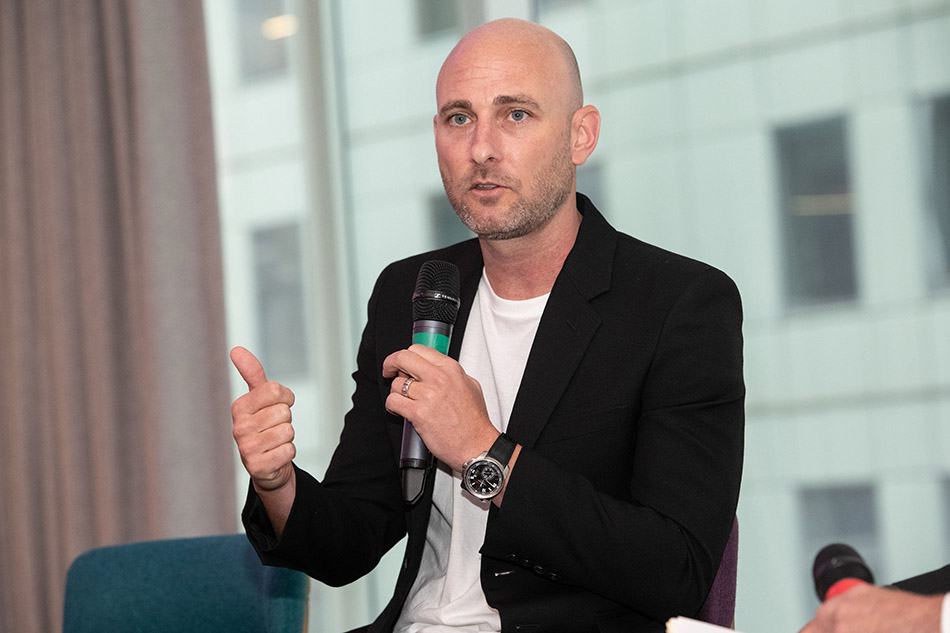Viant Stock Jumps 29% On Rebound In CTV Growth
Ad tech company cuts 2Q net loss as revenue grows 12%

A rebound in streaming and connected TV advertising helped boost Viant Technology stock Tuesday.
Viant shares rose nearly 30% to close at $5.89 after the company reported that it cut its second quarter net loss to $1.1 million, or 7 cents a share, from 3.4 million, or 24 cents a share a year ago.
Revenue increased 12% to $57.2 million.
But the real boost came from a rebound in CTV spending and the acceleration in the shift of ad spending from traditional linear TV to streaming.
“The general sense is we’re in a much more positive spot and the growth of streaming is higher than the decrease in linear TV. I think the unexpected growth rates of streaming have caught Wall Street by surprise,” Tim Vanderhook, co-founder and CEO of Viant told Broadcasting+Cable.
Also Read: Viant Stock Jumps 90% After Initial Public Offering
The growth in streaming helps Viant because Viant helps its client navigate the bumpy CTV space.
Broadcasting & Cable Newsletter
The smarter way to stay on top of broadcasting and cable industry. Sign up below
“Our customers are feeling pan and that pain is what’s driving our business to grow because they need to understand what they’re getting for their money in advertising and that’s what we deliver,” Vanderhook said.
Viant is using artificial intelligence–deep machine learning–to get lower prices and more reach for their ad dollars.
“The application of artificial intelligence when it comes to ad tech is probably going to be bigger than the invention of the RTB [real time bidding] protocol for programmatic advertising,” Vanderhook said. “ We're seeing just incredible benefits by applying, we used to call it machine learning, and now we've upgraded it to deep learning.”
On Viant’s earnings call with analysts, Vanderhook said the company’s new AI-powered Bid Optimizer was achieving 35% CPM savings for its clients.
Vanderhook said that while clients are paying 35% less, media companies aren’t getting 35% lower rates for their ad inventory.
Instead, because Viant enables its clients to deal directly with media companies, the savings come from avoiding middle men who arbitrage the bids on programmatic platforms. In many cases, clients were winning more auctions with lower bids once the middlemen were out of the mix.
At the same time, media companies were getting higher net CPMs for their programmatic deals via Viant.
On top of that Viant’s Direct Access product is bringing ad dollars from mid-sized clients to big media companies.
“That’s why publishers are so excited about our Direct Access program,” Vanderhook said. “We're bringing that next level customer and opening up access for them to buy TV in a cost effective way. It’s bringing new demand to the table.”
New money will also be flowing through Viant when cookies disappear from digital advertising next year.
Instead of cookies, Viant has been using an identity graph to target customers and measure the effectiveness of campaigns.
Most advertisers aren’t ready for the change and when it happens, they’ll come to Viant because its identity graph already is included about 90% of programmatic bids.
“I think eventually [the rest of the industry] will copy us and the industry will acquiesce on the households as the unit, because we have five decades of measuring TV by households and its works,” he said.
Viant is also pushing the ad industry towards sustainability. Earlier this year, it launched its Adtricity program. Vanderhook said it will be evolving Adtricity.
“Our goal is basically anytime we deliver an ad, it should be a carbon-free ad,” he said.
Jon has been business editor of Broadcasting+Cable since 2010. He focuses on revenue-generating activities, including advertising and distribution, as well as executive intrigue and merger and acquisition activity. Just about any story is fair game, if a dollar sign can make its way into the article. Before B+C, Jon covered the industry for TVWeek, Cable World, Electronic Media, Advertising Age and The New York Post. A native New Yorker, Jon is hiding in plain sight in the suburbs of Chicago.

